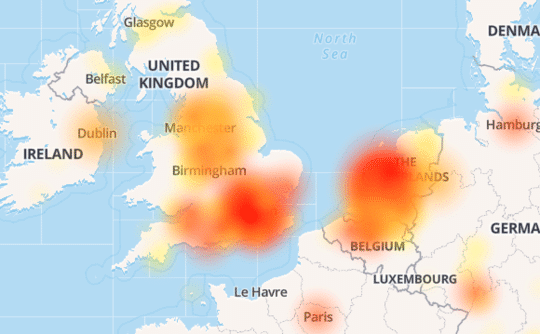Imagine coming into your office on a Monday morning, getting your coffee, firing up the computer…and not getting any email. For some, this might seem like a dream scenario – but only if you didn’t actually have any work to do. When you take real life into account, this would probably be a disaster for your productivity.
Unfortunately, with Microsoft Cloud Email, Office 365 and Outlook.com, your email going offline can happen all too often, and with very little visibility on when it will be back up, why it went down, and what you may have missed because of an email outage. Here are but a few significant Office 365 email outages and other Microsoft Cloud disruptions that customers have endured in the past few years.
Jan 18 2016: An outage disrupted email for some users for up to 5 days (or 9 by some reports). It seemed as of the 27th, people were still having issues.
Feb 22 2016: Users had trouble accessing their email from mobile and from the web portal.
March 7 2017: An outage that lasted several hours, affecting authentication servers, leading to many users being locked out of services.
March 21 2017: Two weeks later, users were prevented from accessing OneDrive, Skype collaboration and Outlook email.
March 31st 2017: Australia experienced an Office 365 outage which started around 9am. The reports peaked around mid-day, and settled down in the afternoon.
 Sept 18 2017: Widespread outages across Europe.
Sept 18 2017: Widespread outages across Europe.
Have a look at Office 365 Status – the twitter account dedicated to updating on office 365 outages. They are busy – a little too busy for any O365 organization to get comfortable.
99.9% Uptime?
In its SLA, Microsoft guarantees a 99.9% uptime – which equals over 43 minutes a month. It appears that they struggle to meet this guarantee, for many customers.
According to the Microsoft website, their data suggests they’ve handily beat their SLA guarantee over the past 2 years. But as this quite thorough analysis suggests, even a complete workday downtime in a single data center (such as the UK) would not bring the number below their SLA. Thus, even in meeting their SLA, the scope of Office 365’s user base still has consequences for a vast group of organizations in terms of how frequent or intensely email outages may occur.
Email continuity solutions not only provide the assurance of 100% up time for your emails, but can also be packaged with other solutions presenting a whole slew of other benefits that includes archiving, retrieval, spooling and disaster recovery. Because Email downtime is not an option for the modern business, this solution set really needs to be considered.
[cta id=’18654′]
Key Considerations for Office 365 Email Outage Protection and Email Continuity
Your Office 365 email security solution needs to improve on Office 365 downtime (which at .1% translates to 43 minutes a month). IT Admins should set objectives (RTOs/RPOs) based on the cost of how long your business can operate without functioning email – and if that cost exceeds investing in a solution that cuts that downtime.
In the event of an outage can employees access their emails from anywhere? Usually this requires a web based email interface. The emergency inbox should allow you to access, read, write and reply to all email.
Will the switchover to the continuity solution be triggered automatically? How much admin input will be required…say it happens when your admin or MSP is on a beach somewhere in the South Pacific (as Murphy’s law would predict)? On the restoration of service it’s important to consider the recovery syncing of new email.
Are You Prepared for The Next Office 365 Outage?
Whether you are a company big or small you need to ensure you have email and business continuity. This isn’t about singling out Microsoft and Office 365. Plenty of the other big cloud service providers will inevitably have down-time (AWS, Google and so forth). And every time it happens, it costs many millions in lost productivity and more to businesses worldwide. The point that needs to be made is that every business needs to calculate the cost of downtime (what happens if no one can access their email for 4 consecutive business hours or 8 unplanned hours a year?) and do a cost-benefit analysis. According to Vircom’s CEO, Mike Petsalis, “Understanding the true cost of downtime makes it clear to most organizations that trusting one cloud supplier, without redundancy, is too costly to be effective.”
By 2020, Gartner estimates that 50% of Office 365 users will rely on non-Microsoft security tools. If you are using Microsoft Cloud Email, Office 365 and Outlook.com, take the steps to insure that email continuity won’t be an issue for your organization.



